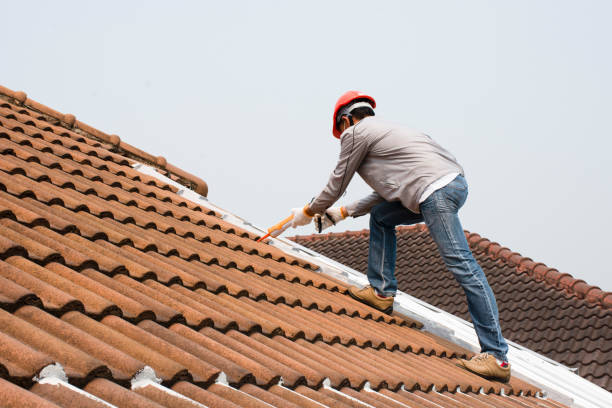Just How to Assess Various Roof Covering Choices for Your Building Requirements
Reviewing roof covering alternatives for your structure needs a thorough technique that takes into consideration numerous elements such as the meant usage of the framework, neighborhood environment problems, and material characteristics. It is vital to evaluate the benefits and drawbacks of various roofing types, from asphalt tiles to metal and clay floor tiles, while likewise considering initial expenses and lasting maintenance. In addition, comprehending energy efficiency and aesthetic appeal can affect your choice. As you contemplate these considerations, one question continues to be: which aspects will eventually lead your choice for a lasting and visually pleasing roof covering remedy?
Analyzing Your Building's Needs
To successfully review roof alternatives, begin by extensively evaluating your structure's demands. Begin by taking into consideration the building's meant use, as different structures might demand varying roof specs. Residential roof coverings usually focus on aesthetics and insulation, while commercial buildings may focus on durability and load-bearing capacity.
Next, review the regional climate problems that will impact roof efficiency. Factors such as temperature fluctuations, rainfall degrees, and wind patterns can influence product choice and style. A roof that masters a temperate environment might not execute also in areas vulnerable to hefty snowfall or severe warmth.
Additionally, examine the structural integrity of your building. Guarantee that the existing framework can sustain the selected roof covering materials, specifically if thinking about heavier choices. It is additionally crucial to assess any neighborhood building regulations or guidelines that may determine specific requirements for roof covering systems.

Contrasting Roofing Products
Once a thorough assessment of your building's requirements has been finished, the following step involves contrasting numerous roofing materials. Each product uses unique benefits and negative aspects, making it important to straighten your option with your certain demands and situations.
Asphalt tiles are widely identified for their affordability and ease of installment, making them a prominent alternative for residential buildings. On the other hand, metal roof covering, recognized for its sturdiness and durability, can endure harsh weather however may include a higher first investment.
Clay and concrete tiles give excellent thermal insulation and aesthetic charm, particularly for Mediterranean-style style, yet they require a more robust architectural support as a result of their weight. Wood shakes offer an all-natural appearance and excellent insulation properties yet may demand more upkeep and are susceptible to fire threats.
Examining Expense and Spending Plan
Examining your roofing alternatives requires a careful analysis of expense and spending plan factors to consider. The total budget plan for a roof covering project makes up several aspects, consisting of material prices, labor expenses, maintenance, and prospective long-term savings. It is vital to establish a clear budget plan before discovering particular roof covering materials, as this will lead the decision-making process and help you avoid overspending.
Begin by getting quotes from multiple specialists to recognize labor prices in your area. Ensure that these estimates include all required solutions, such as removal of the old roofing system, setup, and any extra attributes, like insulation or air flow site web improvements - Toledo Roofer. Next off, assess the price of various roofing materials, thinking about both preliminary setup prices and anticipated life expectancy

Recognizing Power Effectiveness
Energy performance plays an important duty in the selection of roof covering products and systems, significantly affecting both energy intake and total convenience within a structure. An appropriate roofing system can improve thermal performance, minimizing the demand for heating and cooling systems, which in turn reduces power costs and decreases environmental impact.
When examining roof covering alternatives, take into consideration products that mirror instead of soak up warmth. Light or reflective roofing products can considerably lower roofing system surface area temperature levels, resulting in reduced power usage during hot months. Additionally, proper insulation and air flow are vital to enhance the energy efficiency of the entire roofing system. Read More Here Insulation avoids warm transfer, while air flow minimizes heat buildup in the attic room room.
One more important variable is the roof's longevity and upkeep demands. Resilient materials that require much less regular substitute add to long-lasting energy financial savings. The power efficiency of a roof system can additionally be evaluated via its conformity with established sustainability ratings such as ENERGY STAR or LEED.
Taking Into Consideration Aesthetic Appeal
A roof's visual allure considerably influences the total look of a structure, enhancing its architectural design and enhancing aesthetic appeal. Toledo Roofer. When assessing roof covering options, it is vital to think about exactly how the chosen product, shade, and style will certainly harmonize with the existing structure and area. A well-designed roof covering can elevate even the easiest of structures, transforming them into visual prime focus
Different roofing materials provide different aesthetic top qualities. For instance, conventional roof shingles might evoke a traditional appeal, while metal roof can impart a contemporary, smooth look. Furthermore, the shade of the roof covering product plays a crucial function; lighter tones can make a structure appear more roomy, while darker tones might produce a cozier ambiance.
Additionally, architectural components, such as dormers and eaves, can enhance the roof covering's aesthetic effect. It is recommended to consult with expert designers or engineers to make sure the chosen roof option straightens with the total layout intent. Ultimately, a roofing system should not just give practical benefits yet likewise contribute favorably to the structure's aesthetic, reflecting the proprietor's preference and the personality of the surrounding setting.
Final thought
